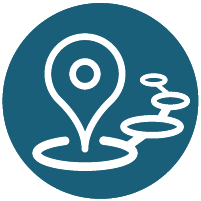Implementing an AI Ethical Use Framework in Secondary Education
,
HBGCC - Innovation Arcade - Model Classroom 1
Session description
Outline
1. Hook (5 minutes)
Display a controversial AI misuse scenario (e.g., AI-generated essay submitted without citation).
Prompt participants: “What AI Use Level does this represent? Ethical or not? Why?”
Collect quick responses (Jamboard/Mentimeter, sticky notes, or discussion).
2. Mini-Lesson: AI Use Levels Framework (10 minutes)
Introduce the Five AI Use Levels.
Modeled after the work of Alex McMillan and Holly Clark
Explain how they relate to real classroom tasks.
Provide examples and lead a think-aloud: “How would this assignment change across levels?”
Distribute or display the visual framework chart and ethical use checklist.
3. Guided Practice: Scenario Sorting (15 minutes)
In small groups, participants evaluate 3–4 real-world classroom AI use cases.
Using the framework levels and ethical use checklist, each group determines the appropriate AI Use Level for each scenario.
Groups must explain and document their reasoning.
4. Discussion & Share-Out (10 minutes, ISTE 7 minutes)
Groups share their scenario and their decision with the whole group.
Facilitate a conversation around:
Gray areas in ethical AI use
Impact on student learning
Effect on subject area or assignment type
Student vs. teacher perspectives
5. Reflection (5–10 minutes)
Reflection & Student Voice
Participants complete a reflection as if they were students:
Some potential discussion questions:
What values are most important to you when using AI tools in school?
How do you decide if using AI on an assignment is fair or unfair?
Is it ever okay to use AI if the teacher didn’t specifically say you could? Why or why not?
How would you feel if a classmate used AI to do an assignment you worked hard on yourself?
What are some risks of relying too much on AI in schoolwork?
Do you think AI should be used differently in math vs. writing or science? Why?
Option to share takeaways in pairs or small groups.
6. Wrap-Up & Extension (5 minutes)
Summarize key takeaways: empowerment, responsibility, and classroom transparency.
‘Iolani Case Study
Introduce Digital Literacy Ambassadors
Share how student feedback can shape policy and how this lesson connects to long-term digital citizenship.
Supporting research
"The AI-Powered Classroom" by Alex J. Podchaski and Holly Clark
Palo Alto Unified School District Generative AI Guidance
https://docs.google.com/document/d/1Td5ToCqonnaFjTkac-L5yQ40DLSqNZo-6cL6Le55-dQ/edit
TeachAI’s AI Guidance for Schools Toolkit https://docs.google.com/document/d/1vO-XXyd26Vz_2lrwJYmVl7a4GAFG4WvEOjREfaZn58k/edit#heading=h.3tqx8ctoevq3
Miriam Scott
https://scottybreaksitdown.com/wp-content/uploads/2023/06/Ethical-vs-Unethical-AI-Scotty-1.png
ISTE AI in Education resources https://www.iste.org/areas-of-focus/AI-in-education
Presenters




Session specifications
Topic:
Grade level:
Audience:
Attendee devices:
Attendee device specification:
Tablet: Android, iOS, Windows
Participant accounts, software and other materials:
Notebook or tablet for taking notes (optional)
Subject area:
ISTE Standards:
Visionary Planner
- Include a wide range of perspectives from the community to develop and sustain a vision for using technology to advance student learning and success.
Digital Citizen
- Manage their digital identity and understand the lasting impact of their online behaviors on themselves and others and make safe, legal and ethical decisions in the digital world.
Collaborator
- Dedicate planning time to collaborate with colleagues to create authentic learning experiences that leverage technology.

 Back
Back Trips and Tours
Trips and Tours